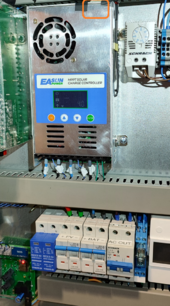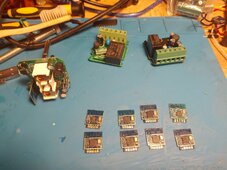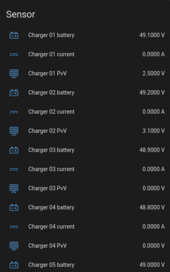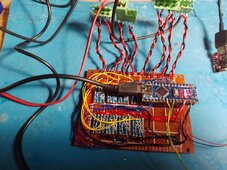profesor79
...
yes,So, i tried to use ESP hw serial port (GPIO3 as RX) and it works much better than SW serial. I'm getting valid data almost every second. In my test setup max charging current is around 6A and in this interval (0A - 6A or 0W - 70W) the readings are ok. I will test it later in real world scenario where i have 48V battery and 1600W solar panel.
I see there is a 3.3V on the LCD, do you know if it is enough to power the ESP?
in my test that works good - see post from 1st of January - my ESP is taped to the charger.







